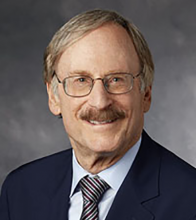You are here
Biden's misery index
Feb 21,2022 - Last updated at Feb 21,2022
STANFORD — Opinion polls show that Americans are gloomy about the current state of the economy, which 68 per cent rate negatively. Not surprisingly, President Joe Biden and his fellow Democrats are focusing on the good news, a low unemployment rate and improved household balance sheets, rather than on the biggest weak spot: inflation.
Averaging below 2 per cent for a dozen years, inflation wasn’t much discussed until the recent surge to 7.5 per cent over the past year. Proximate causes include supply-chain disruptions and worker shortages, combined with massive monetary and fiscal stimulus. The latter continued even as the economy neared full employment. Biden’s March 2021 American Rescue Plan was twice the size of the projected output gap for the next two years, and now Democrats are rightly worried that surging inflation will hurt them in the midterm congressional elections this November, and possibly even in the 2024 presidential election.
Several decades ago, economist Arthur Okun proposed the “Misery Index” as a simple measure of the state of the economy. Reflecting the sum of the inflation and unemployment rates, it made intuitive sense, and it aligned with the US Federal Reserve’s “dual mandate” to pursue both price stability and maximum employment. Historically, the Misery Index seems to be correlated with electoral outcomes, with the party in power penalised when the index is high and rewarded when it is low.
Hence, in 1980, when the Misery Index was over 20 per cent (13.5 per cent inflation plus 7.2 per cent unemployment), Ronald Reagan trounced Jimmy Carter. Sometimes, one component dominates, as is the case now, with high inflation and low unemployment totaling 11.4 per cent. In 1932, double-digit falling prices could not save Herbert Hoover from defeat to Franklin Roosevelt. Owing to the Great Depression, one-quarter of the country was unemployed.
But the Misery Index is not always a reliable guide. In 1952, Dwight Eisenhower won after 20 years of Democrat incumbents, despite the index being at 3.5 per cent, still a post-World War II low. More recently, George W. Bush defeated incumbent vice president Al Gore (though he lost the popular vote) when the index was low and balanced at 7.3 per cent. And John McCain lost to Barack Obama despite a nearly identical reading (albeit one dominated by high unemployment).
We could augment Okun’s simple formula using voting models. Yale economist Ray C. Fair’s econometric model is somewhat better at predicting the share of the two-party vote, based on factors such as recent growth in real (inflation-adjusted) GDP per capita and inflation, as well as measures of incumbency and the frequency of good economic news. Insights from psychology suggest that people respond more to negative events than to positive ones, value stability over fluctuation, and exhibit a present bias that leads them to discount the future heavily. Such models thus assign larger weights to more recent conditions, though they do not weight bad news more than good news.
Headline economic figures certainly matter. Dependable statistics are important to families, firms, and policymakers alike. As the great Nobel laureate economist Paul Samuelson put it, GDP is one of the “great inventions of the twentieth century”. But national accounts are close to useless if they cannot be trusted. When US President George H.W. Bush sent me to Moscow to help Mikhail Gorbachev with his economic reforms, I asked officials at the state statistics bureau how they measured the Soviet economy. They sheepishly revealed that they kept two sets of books: what they published and what they believed. When I asked why, one burst out laughing: “When Stalin was alive,” he replied, “we kept a third: the statistics he wanted to see.”
The United States does not have that problem. From a top-line perspective, its per capita GDP really is much larger than that of other advanced economies, 50 per cent higher after taxes than in welfare states such as Sweden and Denmark. But various adjustments can improve other countries’ comparative standing. For example, while per capita GDP is far higher in America than in France, the French work fewer hours.
Economists agree that people tend to be risk averse, and that the value of additional income beyond a certain threshold tends to yield diminishing returns in terms of well-being. Together, these considerations suggest that adjusting international comparisons for two potentially important factors, income inequality and instability, would further reduce the gap between America and other countries.
Sometimes economic progress is accompanied by environmental degradation, most severely in China and the former Soviet Union. After adjusting for environmental costs, America’s GDP falls, but its growth rate increases, because the damage, relative to GDP, was larger in earlier periods.
But none of these adjustments would be large enough (in the space of just a few quarters) to matter much in voting models. Moreover, many additional factors affect a polity’s sense of overall well-being: health conditions, crime and safety, the size and scope of government, the quality and reliability of public services, immigration, and foreign affairs all play a role. Expectations, rather than just current conditions, also can influence voting. Here, polls show that Americans are pessimistic about their children’s economic future.
These factors’ relative importance waxes and wanes with economic conditions. Environmental concerns tend to rate highly in periods of prosperity, but less so when economic problems arise. During the 2020 pandemic-induced recession, there was broad support for immense government intervention. Yet, by 2021, Americans wanted the government to do less.
All of this is bad news for Biden and the Democrats. Their narrow path to victory in this year’s midterms may depend on whether the Fed can engineer a sharp decline in the inflation rate without much of an increase in unemployment. That would be a rare feat in the history of the Misery Index.
Michael J. Boskin, professor of Economics at Stanford University and senior fellow at the Hoover Institution, was chairman of George H.W. Bush’s Council of Economic Advisers from 1989 to 1993. Copyright: Project Syndicate, 2022.













